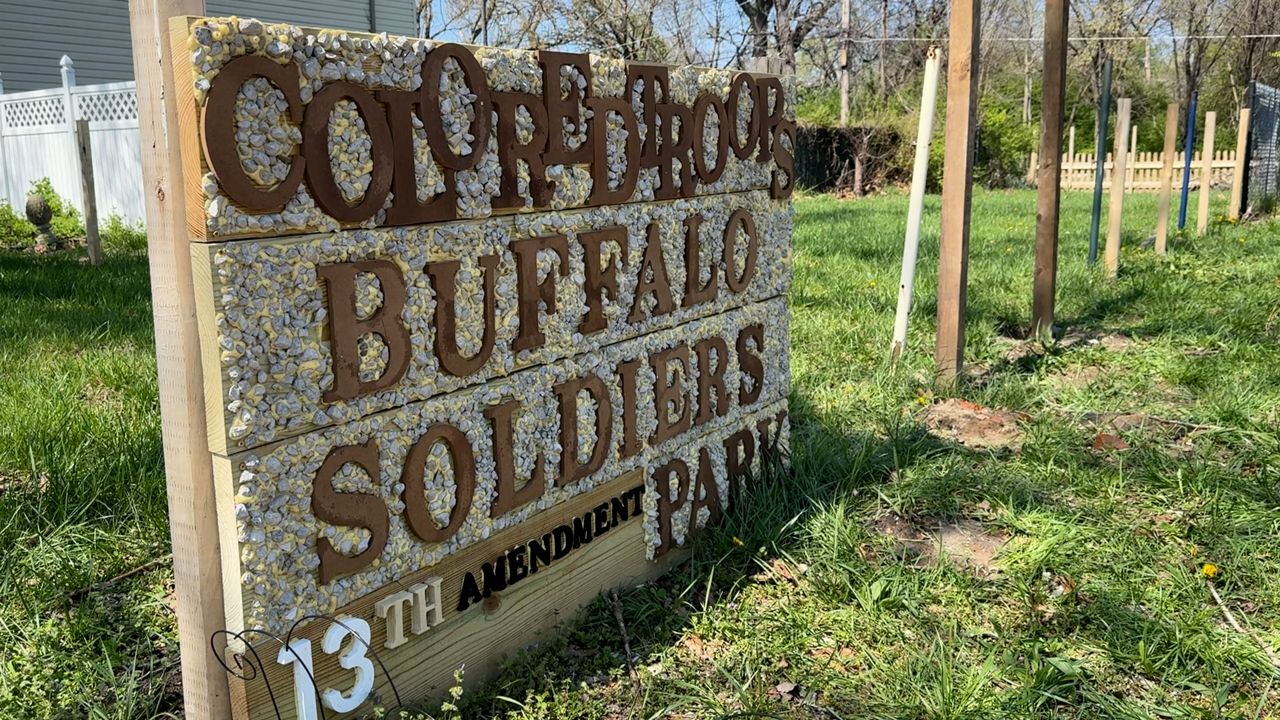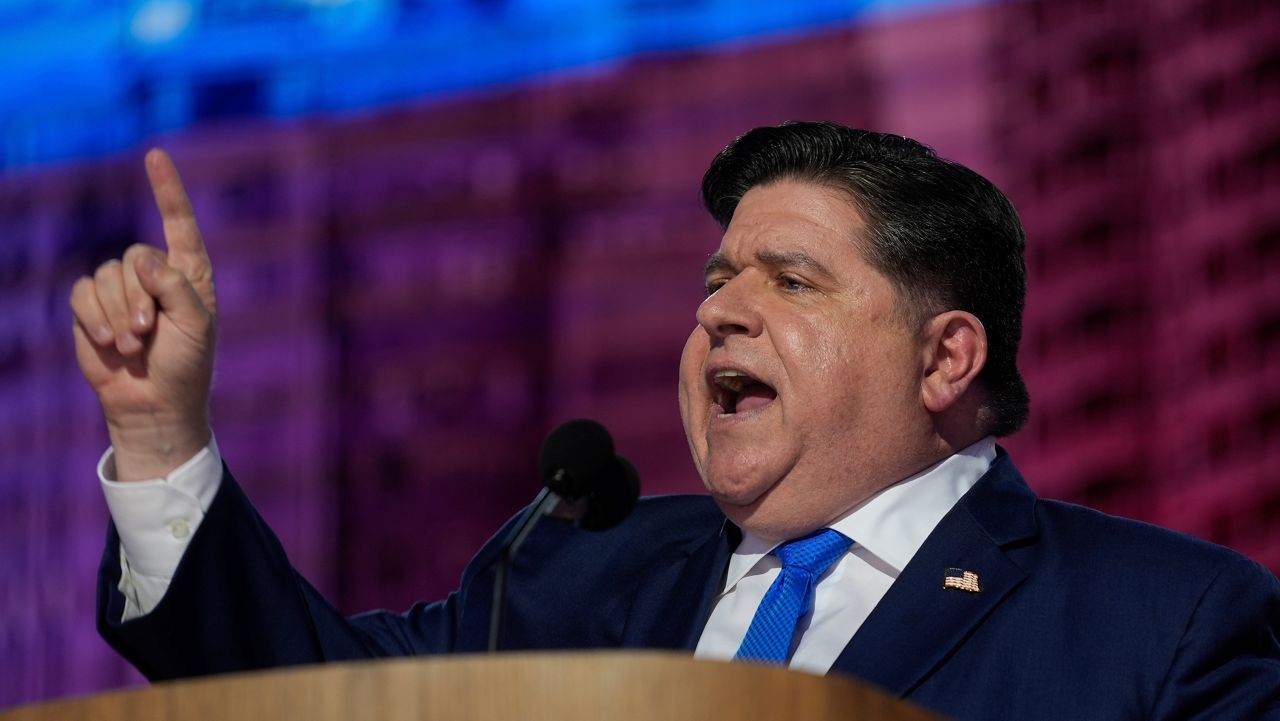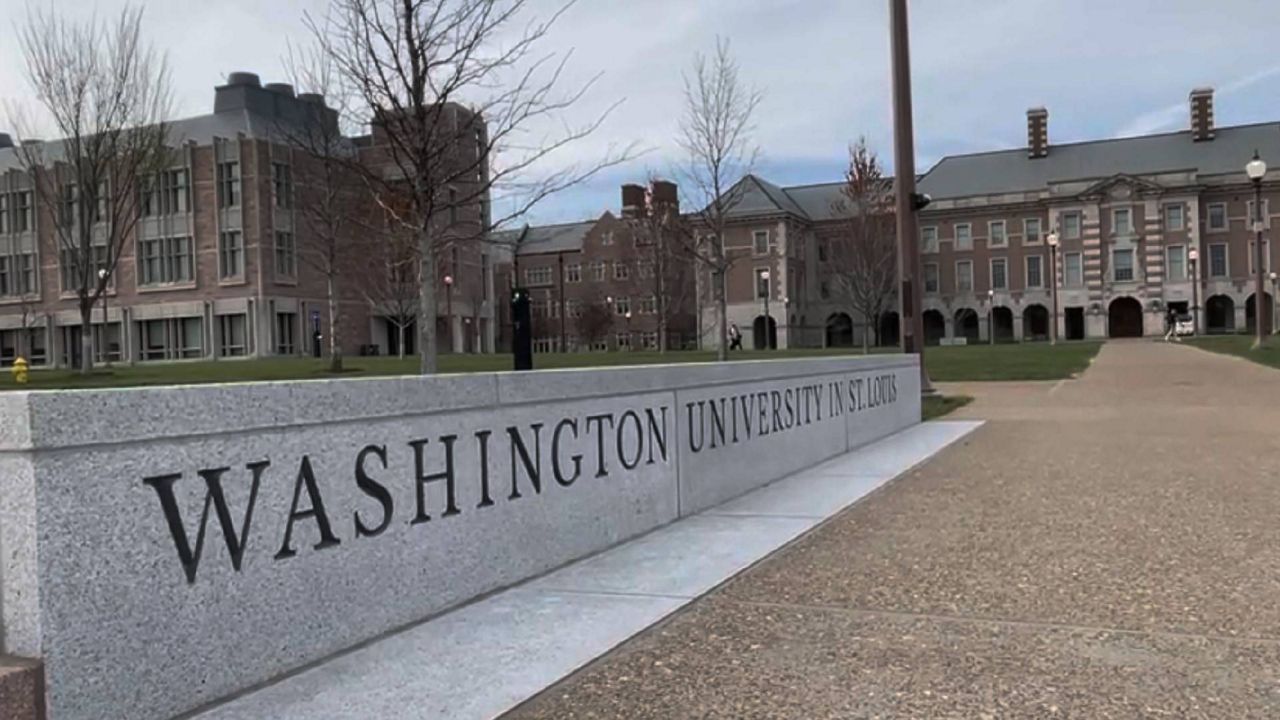ST. LOUIS—A park commemorating Black troops, who were nicknamed “Buffalo Soldiers,” is coming to North St. Louis City.
“Why are we doing this? Because it’s well overdue,” said Carla ‘Coffee’ Wright, an activist of equality, descendent of a Buffalo Soldier and host for the groundbreaking. “We have 220-thousand colored troops family and with that 220-thousand, 209-thousand names are in Washington DC at the African American Civil War museum with the black soldiers who joined the Civil War.”
During Wright’s speech she revealed that her ancestry includes at least two soldiers of the “colored troop” and mentioned various other groundbreaking attendees were descendants as well. Right across from where the new park is going in is Fairgrounds Park. Historian Ed Bailey spoke during the groundbreaking to the importance of the land during the Civil War.
“The land that we see across the street that we know as Fairgrounds Park was secured by the US Army for a major military installation which was known as Camp Benton or Benton Barracks,” said Bailey. “Benton Barracks was a major piece of ground that housed a military hospital, cavalry stables for the horses, warehouses for equipment and supplies. A major field for drill and practice, and barracks which would support up to 30-thousand troops. Of the men stationed at Benton Barracks, there were the all black units of the 67th colored infantry, the 65th, the 67th and the 68th. These were men that fought hard during the Civil War.”
Free black men were initially turned away from enlistment at the start of the Civil War, per the National Archive. Missouri General John C Fremont and General David Hunter of South Carolina issued proclamations to allow the enlistment of free black men but their superiors revoked the orders.
Confederate South beat the Union North for the first year of the Civil War. Declining white volunteers for service and the increasing population of free black men led to the US government reconsidering black troops for the Union army. President Abraham Lincoln drafted the Emancipation Proclamation and when it went into effect, on January 1, 1863, a turning point in the war occurred.
“We say that freedom came by our own hand,” said Johnson Lancaster, during the ground breaking. “The bottom line is four hundred thousand African Americans gave the ultimate sacrifice for free, for immunity from slavery. That’s the deal, that’s why we’re here.”
The National Park Service stated the proclamation strengthened the Union cause, subsequently weakening the Confederacy. As a result, the Union won multiple key battles such as Gettysburg until the end of the war when Confederate General Robert E. Lee surrendered at the Appomattox Court House on April 9, 1865. Five days later, President Lincoln was assassinated.
Following the American Civil War, the 39th United States Congress passed the Army Reorganization Act of 1866, signed by President Andrew Johnson, creating six all-black peacetime regiments who fought in various wars and helped the westward expansion. Those regiments were later consolidated into four, the 9th and 10th cavalry and the 24th and 25th infantry who became known as “the Buffalo Soldiers,” per the National Museum of African American History and Culture (NMAAHC).
Various reasons are tributed for the “Buffalo Soldiers” nickname ranging from physical appearance to battle prowess, per the NMAAHC. The Buffalo Soldiers considered the nickname high praise and supported the nation’s westward expansion by protecting settlers, building roads and other infrastructure, as well as guarding the postal service.
“We’re looking forward to one day not just being a park, we’re looking forward to having a gift store here,” said Wright. “We’re looking forward to having an education center and if you don’t know your history family, you don’t know where you might fit in, you fit in—I can guarantee you somebody in your family fought.”
Buffalo Soldiers served in the Indian Wars, Spanish-American War, Philippine-American War and maintained border security during the Mexican Revolution. According to the National Park Service, Buffalo Soldiers served as the first park rangers for the United State’s national parks, well before the creation of the National Park Service.
NMAAH stated due to polices of President Woodrow Wilson, the Buffalo Soldiers were put under French commander during World War I, that was the first time American troops were under the command of a foreign power. Just before World War II, the 9th and 10th Cavalry Regiments were mostly disbanded with most of their troops moving into service roles. The original 25th Buffalo Soldiers infantry regiment fought in the Pacific during World War II. During the Korean War, the last of the regiments were disbanded and integrated into other military units marking the end of the Buffalo Soldiers.








